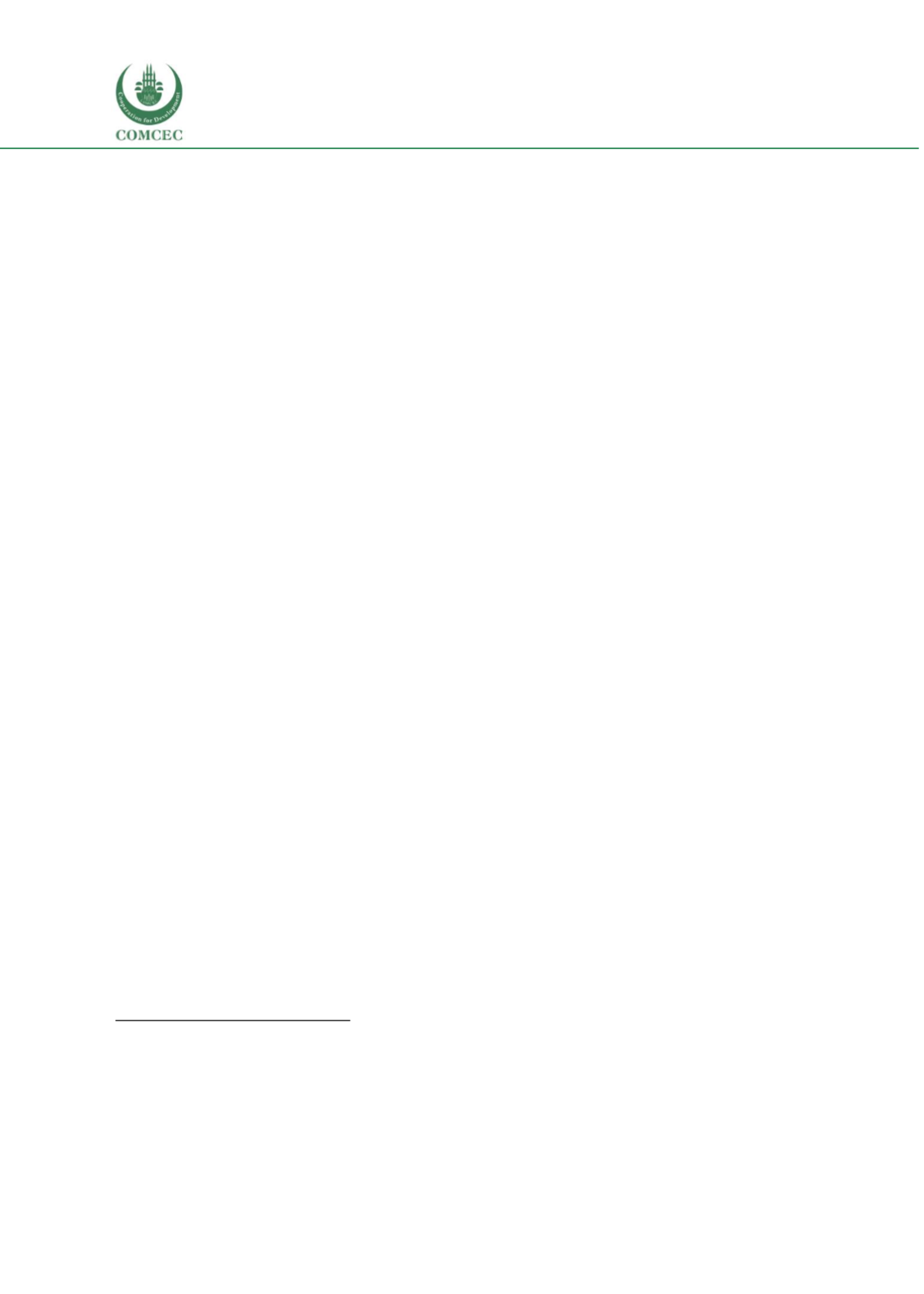

Education of Disadvantaged Children in OIC:
The Key to Escape from Poverty
62
3.
CASE STUDIES
3.1 SENEGAL
Overview
Country Context
Economy:
While the Senegalese economy experienced strong growth rates during 1995-2005,
the country remains a low-income country. With a human development index (HDI) of 0.464
(UNDP), Senegal ranks 166th out of 182 countries
204
. Growth decelerated since 2006 due to a
relatively stagnant private sector, rapid rise in public expenditures and reduced dynamism of the
traditional engines of growth (construction, telecommunications, and financial services). The
informal sector remains the largest employer and represents 55% of the economy. The real GDP
growth rate was 6.5% in 2015, with fluctuations from a peak of 6.7% in 2003 and a low of 2.2%
in 2009
205
. While the growth over the past 20 years has led to large reductions in poverty levels,
poverty incidence remains relatively high and persistent (38% poverty headcount in 2011
206
),
especially in rural areas.
Administration:
In 2008, the Senegalese territory was divided in additional regions for a total of
14 administrative regions: Dakar, Diourbel, Fatick, Kaffrin, Kaolack, Kédougou, Kolda, Louga,
Matam, Tambacounda, Thiès, Saint-Louis, Sédhiou and Ziguinchor
207
. In addition to the 14
regions, each headed by a governor, there are forty-five (45) departments headed by prefects and
about 571 municipalities. These stem from the implementation of Act III of decentralisation,
whose main objective is to set up economic poles with a greater responsibility at the decentralized
level. The official language of the country is French with an additional 22 national languages, with
the most widely being Wolof, Pulaar, Serer, Diola, Mandingue and Soninke.
Demography:
According to the 2013 population census
208
, the total population of Senegal is 13.5
million people with 55% living in rural areas. The population is unevenly distributed, with higher
densities in the West and Central regions and sparsely populated North and Eastern regions.
Senegal has begun the demographic transition but continues to experience strong population
growth (3.1% in 2015). With a predominantly young population (43.8% below the age of 14 in
2015) and a slow economy, the question of employment remains the top priority for public policy
and households. This translates into government prioritization of the education sector in terms
of investments (7.2% of GDP in 2014
209
) but also affects the demand for education and especially
for return to education investment by the population. The current state of access to education is
therefore a result of both supply-side and demand-side dynamics.
204
UNDP (2015)
http://hdr.undp.org/sites/all/themes/hdr_theme/country-notes/SEN.pdf205
UNESCO (2015) “Profiles: Senegal”
206
Dang, H, Lanjouw, P., Swinkels (2014)
207
See map in Annex 1
208
ANDS (2014) Recensement General de la Population et de l’Habitat, de l’Agriculture et de l’Elevage - RGPHAE 2013.
209
See Table 1. Senegal Basic Indicators
















